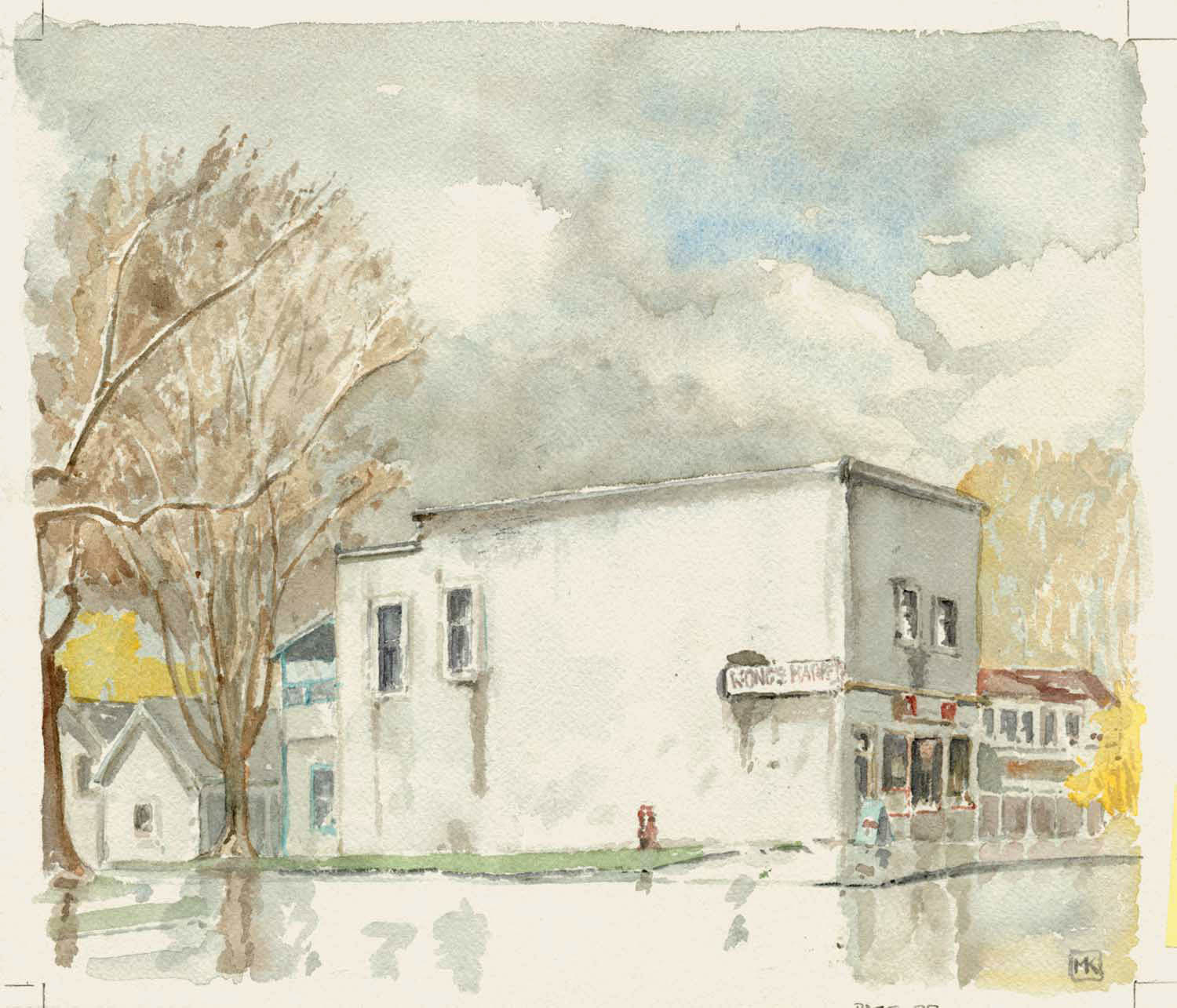Return to main Vanishing B.C. page Return to home page
Page last updated March 6, 2022
©Michael Kluckner
I have produced a graphic novel – Toshiko – about this period of Nikkei history.

Sketched 2001
|
Wong's Market, as it is now called, is one of the survivors of a generation of grocery stores that dotted the city, usually along the streetcar lines. Built on Main Street at 44th in 1910, it is a nondescript two-story woodframe structure, now covered in stucco but once sheathed with brick (on the north and the front) and horizontal board siding (on the south side). Downstairs is a surprisingly narrow store space, while upstairs is living quarters for the proprietors. It was the first building on that part of Main, erected once BC Electric extended the streetcar line south from 33rd to Marine Drive. Originally called the Winnott Store (see correspondence below), then the Reeve & Harding General Store, it was soon renamed Blyth's Cash Grocery and provisioned by Kelly-Douglas and Company (evidenced by the Nabob billboard on the side of the photo below).
Fumiko Fukuhara with her newborn son David on 44th Avenue just west of Main, about 1939 George Fukuhara inside his store, Blyth's Cash Market, about 1939. He took the picture himself, using a timer. That January, in the wake of the attack on Pearl Harbour, the
federal and provincial governments moved swiftly to rid the
coast of its Japanese-Canadian residents, stripping them of
their rights and turning them into "enemy aliens." Hastings
Park, the site of the annual fall exhibition and the race track,
became the coordinating point for their dispatch and internment.
Probably the Fukuharas were not detained initially, but were
allowed, as was the case with other local people, to remain in
their homes under curfew. However, they were soon forced into
Hastings Park where they reunited with their relatives, the
Nagatas and the Konishis, who had been taken from Mayne Island
in April. Kumajiro Nagata, the extended family's "elder" who had been in charge of the Japanese businesses on Mayne Island, made the decision that they would strike off on their own, like the Japanese Canadians who went to the self-sustaining villages in the Interior (see below). Perhaps using the sponsorship of an old associate named Charlie Nakamura, originally from Telegraph Cove, who had established a railway-tie mill in Salmon Arm, they obtained permission from the BC Security Commission to set out in June for Skimikin, near Squilax in the Shuswap area.
"En route to work camp near Jasper," photo taken February 25, 1942 by Jack Lindsay. City of Vancouver Archives CVA 1184-12 "Vehicles confiscated at
Hastings Park", photo taken March 3, 1942 by Jack Lindsay.
City of Vancouver Archives CVA 1184-86
From Mike Jackson, Jackson’s General Store,
2022: I wanted to reach out to you and let you know
that a friend and I have an accepted offer on the old WONG'S
market store on Main st. Vancouver. From Maxine Schleger, 2022: Here is some
information on the early years of the store at 5993 Main St.,
commonly known as Wong's Market.
And here is an ad from The Greater Vancouver Chinook December 19, 1914 p. 9.
From Guillermina Coronado Davila,
Guadalajara, Mexico, 2021:  |